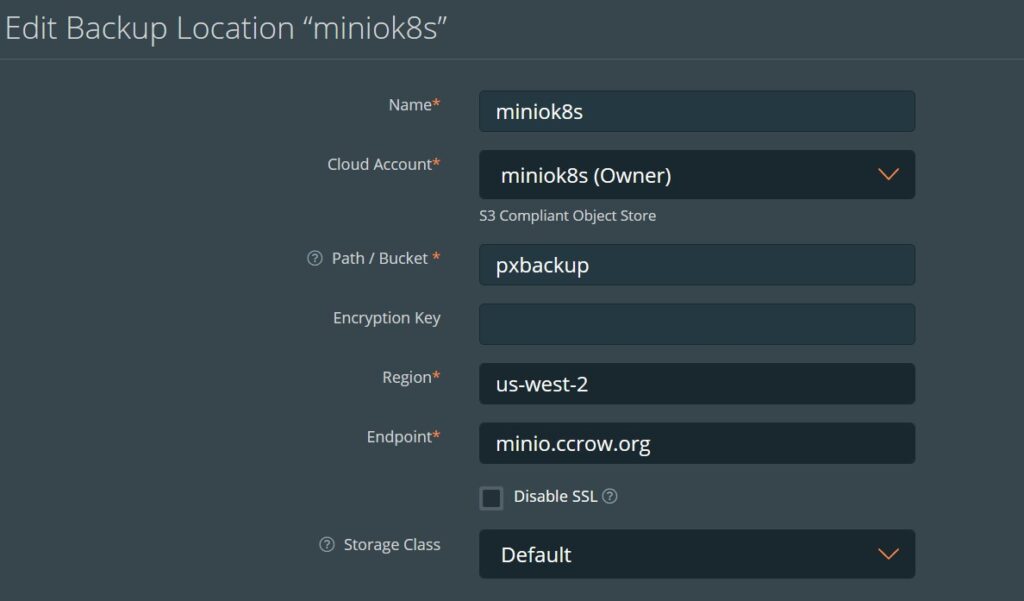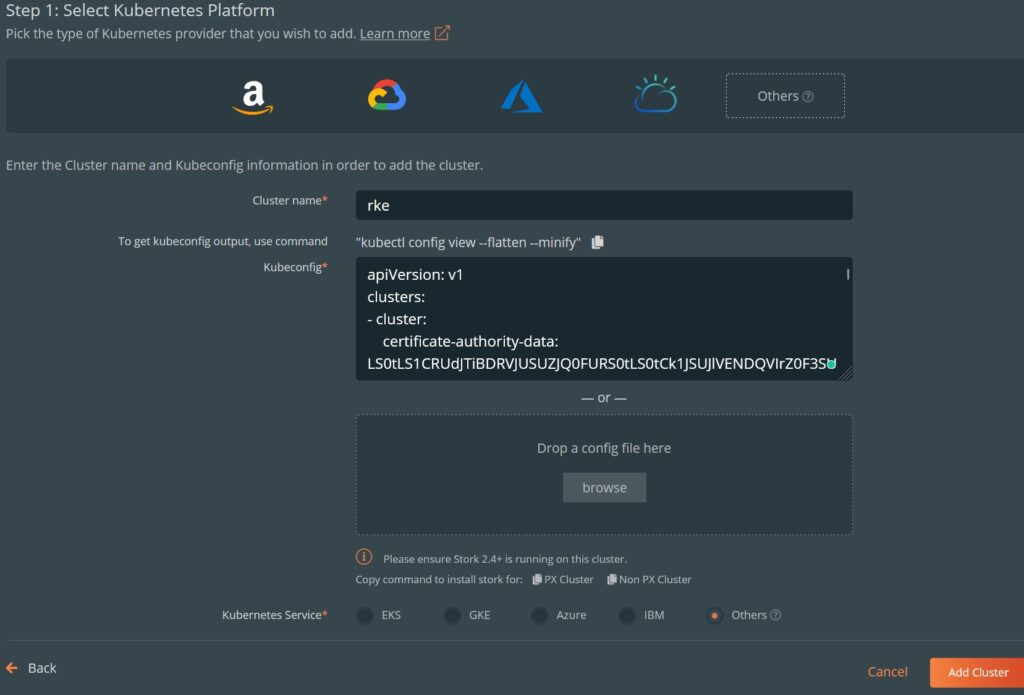Now we will finally start to get in to some useful configurations for our home PlexStack: Ingresses and external services.
An Ingress is a kubernetes managed reverse proxy that is typically selected through a host. It turns out that your new Rancher cluster is listening on port 80 and 443, but if you have tried to connect by IP address, you will be greeted with a 404 error. An ingress will essentially route a web connection to a particular URL to a service. This means that you will need to configure your DNS service, and likely your router. Let’s look at an example to explain:
I have a service called Uptime Kuma (an excellent status dashboard with alerting) that runs on a raspberry PI. The trouble is, I want to secure the connection with SSL. Now I could install a cert on the Pi, but how would I automatically renew the 90 day cert for let’s encrypt? More importantly, how do I have multiple named services behind a single IP address? Ingresses.
For my example, I have a DNS entry for status.ccrow.org that points to the external IP of my router. I then forward ports 80 and 443 (TCP) to my Rancher node. If I have more than one node, it turns out I can port forward to ANY rancher node.
Next, I have a yaml file that defines 3 things:
- A service – an internal construct that kubernetes uses to connect to pods and other things
- An endpoint – a kubernetes object that resolves to an external web service
- An ingress – A rule that looks for incoming connections to status.ccrow.org, and routes it to the service, and then endpoint. It also contains configurations for the SSL cert information
apiVersion: v1
kind: Service
metadata:
namespace: externalsvc
name: pikuma-svc
spec:
type: ClusterIP
ports:
- protocol: TCP
port: 3001
targetPort: 3001
---
apiVersion: v1
kind: Endpoints
metadata:
namespace: externalsvc
name: pikuma-svc
subsets:
- addresses:
- ip: 10.0.1.4
ports:
- port: 3001
---
kind: Ingress
apiVersion: networking.k8s.io/v1
metadata:
name: ingress-pikuma
namespace: externalsvc
annotations:
cert-manager.io/cluster-issuer: letsencrypt-prod
kubernetes.io/ingress.class: nginx
spec:
tls:
- hosts:
- status.ccrow.org
secretName: status-tls
rules:
- host: status.ccrow.org
http:
paths:
- path: /
pathType: Prefix
backend:
service:
name: pikuma-svc
port:
number: 3001A few important elements in the above I will explain:
- all 3 of these elements will be stored in the externalsvc namespace (which will need to be created!)
- The ingress >(points to)> the services >(points to)> the endpoint
- The name of the service and endpoint needs to match on line 5, 17, and 46
- The service type on line 7 is interesting. If it is set to loadBalancer, then an IP address (from the range that we defined in the previous blog post) would be provisioned to the service. No sense in doing that here.
- Line 30 defines which cert provisioner we are using. Per our previous blog post, your choices are letsencrypt-prod, letsencrypt-staging, and selfsigned-cluster-issuer. Only use letsencrypt-prod if you are ready to go live. You can certainly use a self-signed issuer if you are using an internal DNS name, or if you don’t mind a self-signed certificate.
- Lines 36 and 39 must match, and define the dns name that will be the incoming point.
Apply the config with:
kubectl create namespace externalsvc kubectl apply -f uptimekuma-external.yaml
If you decided to go with the let’s encrypt cert, some verification has to happen. It turns out, the cert-manager will create a certificate request, which will create an order, which will create a challenge, which will spawn a new pod with a key that the let’s encrypt services will try to connect to. Of course if the DNS name or firewall hasn’t been configured, this process will fail.
This troubleshooting example is an excellent reference for tracking down issues (Credit):
$ kubectl get certificate NAME READY SECRET AGE acme-certificate False acme-tls 66s $ kubectl describe certificate acme-certificate [...] Events: Type Reason Age From Message ---- ------ ---- ---- ------- Normal Issuing 90s cert-manager Issuing certificate as Secret does not exist Normal Generated 90s cert-manager Stored new private key in temporary Secret resource "acme-certificate-tr8b2" Normal Requested 89s cert-manager Created new CertificateRequest resource "acme-certificate-qp5dm" $ kubectl describe certificaterequest acme-certificate-qp5dm [...] Events: Type Reason Age From Message ---- ------ ---- ---- ------- Normal OrderCreated 7m17s cert-manager Created Order resource default/acme-certificate-qp5dm-1319513028 $ kubectl describe order acme-certificate-qp5dm-1319513028 [...] Events: Type Reason Age From Message ---- ------ ---- ---- ------- Normal Created 7m51s cert-manager Created Challenge resource "acme-certificate-qp5dm-1319513028-1825664779" for domain "example-domain.net" $ kubectl describe challenge acme-certificate-qp5dm-1319513028-1825664779 [...] Status: Presented: false Processing: true Reason: error getting clouddns service account: secret "clouddns-accoun" not found State: pending Events: Type Reason Age From Message ---- ------ ---- ---- ------- Normal Started 8m56s cert-manager Challenge scheduled for processing Warning PresentError 3m52s (x7 over 8m56s) cert-manager Error presenting challenge: error getting clouddns service account: secret "clouddns-accoun" not found
9/10 times, the issue will be in the challenge, and let’s encrypt can’t connect to the pod to verify you are who you say you are.
Now the above isn’t very cool if you only have one service behind your firewall, but if you have half a dozen, it can be very useful because you can have all of your web services behind a single IP. We will be building on using the ingress next by deploying our first application to our cluster..


